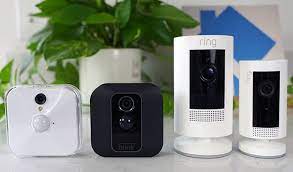
Blink Vs Ring cameras are similar to Ring’s, but Ring is more of a gateway product for higher-end setups. Ring also has a wider range of accessories, including doorbells with face recognition. This is an important feature for people who want to know if someone is home, but don’t want to wake everyone up.
Battery Life
Battery life is an important consideration when comparing Blink vs Ring. The Blink’s battery lasts for about two years, while the Ring’s lasts only six months. Both cameras have their pros and cons, with the Blink offering a greater range of features and compatibility with Amazon’s Alexa and other smart home devices. However, Ring does have a higher price tag, which may be a consideration if you plan on using your cameras for years.
Both Blink and Ring indoor security cameras offer dual power. The Blink has a flexible battery, which allows for easy transport and backup power. The Ring has a wired Sync Module 2 that handles its power-hungry Wi-Fi connection. It also uses more efficient wireless tech.
Detection Features
There are many differences between the Blink and the Ring, but there are some common features that they share. Blink has a battery life of about two years, while Ring’s lasts up to six months. Ring also has a more expansive selection of accessories, including face-recognition doorbells.
Both companies offer cameras, but Ring has a larger selection. Its camera lineup is vast and includes both indoor and outdoor cameras as well as floodlight cameras. Ring is also stronger in the doorbell department, with eight distinct models listed on its site. Blink, on the other hand, offers a single doorbell that uses replaceable batteries.
Ring Security Camera
Both Blink and Ring have apps for mobile devices. Ring’s Always Home app connects to any Ring security camera and lets you view live footage of your home and assign multiple approved users. It also lets you view a history of past events. Ring cameras also let you know if your home has been disarmed.
Subscription Plans
Blink users can choose from several subscription plans to use Blink XT2 and other Blink cameras. The Blink Basic subscription plan is for the basic device, including the Blink XT and older cameras. The Blink Basic subscription plan can be changed or cancelled at any time.
Blink Vs Ring has a subscription plan and uses cloud storage, while Blink uses local storage on the Sync Module 2. Blink allows users to save videos to USB sticks without a subscription, while Ring ties all storage to a subscription plan. In addition, both Blink and Ring sell additional accessories such as the Ring Spotlight Cam, which records color video during night. Blink also sells a floodlight camera that records video in low light conditions.
While the two companies have similar price tags and features, Ring has a more robust app. While Blink does not offer continuous video recording, it allows you to record up to 60 seconds at a time. The Blink app is more basic but still useful.
Security Flaws
Blink and Ring both have apps that allow users to view the camera feed in real time and review previously recorded footage. Both have a small number of security flaws, but these issues are usually easily patched with firmware upgrades. Ring users will need to install Ring Protect in order to use their cameras.
Final Words:
In addition, Blink does not offer professional monitoring and sells only a small selection of cameras. Ring, on the other hand, offers a large variety of security devices. Ring also allows you to use third-party products alongside its security system, such as smart locks and thermostats.








